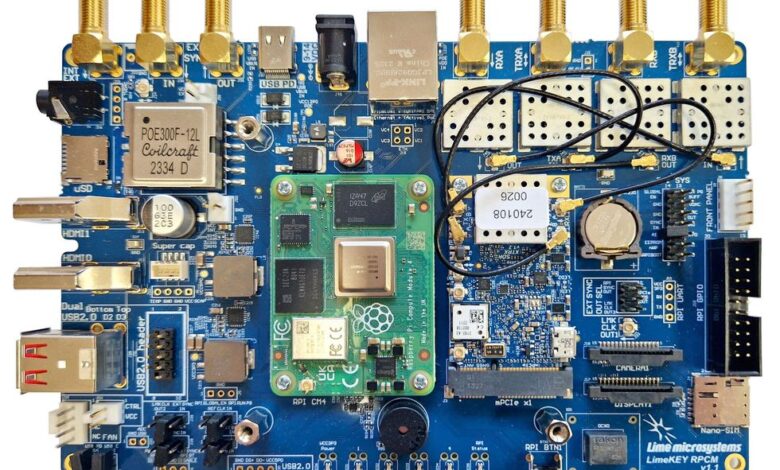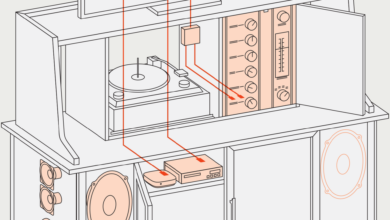Vodafone Launches Private 5G Tech to Compete With Wi-Fi

As the world’s 5G rollout continues with its predictable fits and starts, one unlikely 5G competitor is now coming into view: Wi-Fi. Private 5G networks—in which a person or company sets up their own facility-wide cellular network—are today finding applications where Wi-Fi (the IEEE 802.11 wireless connectivity standard) was once the only viable game in town. This month, the Newbury, England-based telecom company Vodafone is releasing a Raspberry Pi-based private 5G base station that it is now being aimed at developers, who might then jump-start a wave of private 5G innovation.
“The Raspberry Pi is the most affordable CPU[-based] computer that you can get,” says Santiago Tenorio, network architecture director at Vodafone. “Which means that what we build, in essence, has a similar bill of materials as a good quality Wi-Fi router.”
The company has teamed with the Surrey, England-based Lime Microsystems to release a crowd-funded range of private 5G base station kits ranging in price from US $800 to $12,000.
“In a Raspberry Pi—in this case, a Raspberry Pi 4 is what we used—then you can be sure you can run that anywhere, because it’s the tiniest processor that you can have,” Tenorio says.
Santiago Tenorio holds one of Lime Microsystems’ private 5G base station kits.Vodafone
Private 5G for drones and bakeries
There are a range of reasons, Tenorio says, why someone might want their own private 5G network. At the moment, the scenarios mostly concern companies and organizations—although individual expert users could still be drawn to, for instance, 5G’s relatively low latency and network flexibility.
Tenorio highlighted security and mobility as two big selling points for private 5G.
A commercial storefront business, for instance, might be attracted to the extra security protections that a SIM card can provide compared to password-based wireless network security. Because each SIM card contains its own unique identifier and encryption keys, thereby also enabling a network to be able to recognize and authorize each individual connection, Tenorio says private 5G network security is a considerable selling point.
Plus, Tenorio says, it’s simpler for customers to access. Envisioning a use case of a bakery with its own privately deployed 5G network, he says, “You don’t need a password. You don’t need a conversation [with a clerk behind a counter] or a QR code. You simply walk into the bakery, and you are into the bakery’s network.”
As to mobility, Tenorio suggests one emergency relief and rescue application that might rely on the presence of a nearby 5G station that causes devices in its range to ping.
Setting up a private 5G base station on a drone, Tenorio says, would enable that drone to fly over a disaster area and, via its airborne network, send a challenge signal to all devices in its coverage area to report in. Any device receiving that signal with a compatible SIM card then responds with its unique identification information.
“Then any phone would try to register,” Tenorio says. “And then you would know if there is someone.”
Not only that, but because the ping would be from a device with a SIM card, the private 5G rescue drone in the above scenario could potentially provide crucial information about each individual, just based on the device’s identifier alone. And that user-identifying feature of private 5G isn’t exactly irrelevant to a bakery owner—or to any other commercial customer—either, Tenorio says.
“If you are a bakery,” he says, “You could actually know who your customers are, because anyone walking into the bakery would register on your network and would leave their [International Mobile Subscriber Identity].”
Winning the lag race
According to Christian Wietfeld, professor of electrical engineering at the Technical University of Dortmund in Germany, private 5G networks also bring the possibility of less lag. His team has tested private 5G deployments—although, Wietfeld says, they haven’t yet tested the present Vodafone/Lime Microsystem base station—and have found private 5G to provide reliably better connectivity.
In research that Wietfeld’s team will be presenting at the IEEE International Symposium on Personal, Indoor and Mobile Radio Communications in September in Valencia, Spain, they found that private 5G can deliver connections up to 10 times as fast as connections in networks with high loads, compared to Wi-Fi.
“The additional cost and effort to operate a private 5G network pays off in lower downtimes of production and less delays in delivery of goods,” Wietfeld says. “Also, for safety-critical use cases such as on-campus teleoperated driving, private 5G networks provide the necessary reliability and predictability of performance.”
For Lime Networks, according to the company’s CEO and founder Ebrahim Bushehri, the challenge comes in developing a private 5G base station that maximized versatility and openness to whatever kinds of applications developers could envision—while still being reasonably inexpensive and retaining a low-power envelope.
“The solution had to be ultra-portable and with an optional battery pack which could be mounted on drones and autonomous robots, for remote and tactical deployments, such as emergency response scenarios and temporary events,” Bushehri says.
Meanwhile, the crowdfunding behind the device’s rollout, via the website Crowd Supply, allows both companies to keep tabs on the kinds of applications the developer community is envisioning for this technology, Bushehri says.
“Crowdfunding,” Bushehri says, “Is one of the key indicators of community interest and engagement. Hence the reason for launching the campaign on Crowd Supply to get feedback from early adopters.”
IEEE Spectrum




